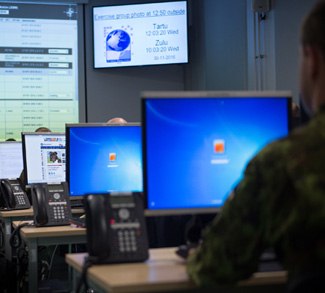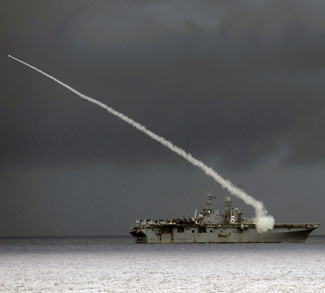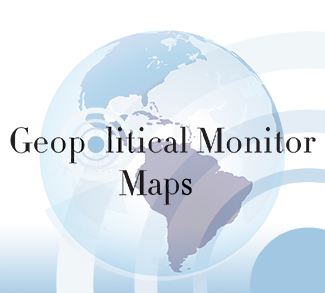Summary
The recent furor over Russian hacking and other interference in the US presidential elections continues to rumble on months into the Trump administration. But the charges now appearing in US media outlets sound very familiar to a group of countries situated on one of the frontlines of the new Cold War: the Baltics. Located on the edges of the Russian Federation, the tiny Baltic republics of Estonia, Latvia, and Lithuania are regarded by the Kremlin as rightfully belonging inside Moscow’s sphere of influence. Since breaking away from the disintegrating Soviet Union in the early 1990s however, the three countries have plotted their own course toward the West. All three joined the European Union (EU) in 2004, and all are frontline members NATO. This has put them squarely in the crosshairs of frequent Russian disinformation and hacking campaigns.
Background
The Bronze Soldier of Tallinn. One of the first instances of the Kremlin’s new cyber tactics, which would be refined in later years during the Russian Federation’s attacks on Georgia and Ukraine, occurred in 2007 over a seemingly trivial, yet symbolic gesture by the Estonian government. That year the government in Tallinn decided to move a bronze statue commemorating Soviet soldiers killed in World War II. This was a provocative gesture as Soviet casualties are still revered in Russia as heroes; the decision was predictably condemned by the Kremlin. Nevertheless, the Estonian government went ahead with the removal, after which critical portions of Estonia’s online media, banking, and government architecture, which was some of the most advanced in the world at the time, were hit by a wave of distributed denial-of-service (DDoS) attacks that crashed numerous websites. In addition to DDoS attacks, the 2007 operation also involved misinformation tactics: users were redirected to photos of Soviet soldiers or fake news stories about the Estonian government on webpages that mimicked the design of trusted news sites. This early attempt at muddying the media waters of what’s true and false would be further refined over the following decade and put to use in the lead-up of the 2016 US presidential elections.
Although the Kremlin denied involvement in the 2007 Estonia attacks, a number of political figures inside Russia subsequently claimed responsibility.
The attacks gave impetus to the establishment of a NATO countermeasure against outside cyberattacks. This was the Cooperative Cyber Defence Centre of Excellence, which was built in Tallinn in 2008.
Ongoing subversion. Such online attacks have become a key weapon in Russia’s arsenal against the West and its would-be allies. Since the 2014 Maidan Revolution in Ukraine, there has been a striking increase in Russian propaganda and disinformation campaigns aimed at destabilizing nearby European countries. The Baltics, Ukraine, Czech Republic, Scandinavian countries, and Germany have all reported such efforts, some of which appear to have been aimed at interfering in internal elections. Others were aimed at Russian-speaking communities abroad, but all involved considerable time, effort, and expense. Moscow appears to see these campaigns as usefully deniable and as countering supposed similar operations by the US and its allies, which the Kremlin blamed for fomenting street protests in Moscow in 2011-12.
Impact
Estonia refines its defenses. Since the original 2007 attacks, Estonia has emerged as one of the world leaders in detecting and deflecting Russian psychological warfare operations. In 2011 it rolled out a long term national defense strategy aimed at preparing its citizens’ psychological defences against the barrage of lies and half-truths unleashed on social media during Russian propaganda campaigns. The government also worked with NATO and regional partners to raise awareness of Russian methods and launched a Russian-language domestic television channel. It has even begun efforts to train so-called cyber-conscripts to focus on information security issues rather than the conscripts’ traditional military role. The Estonian government also issues annual reports through its intelligence services, tracking Russian efforts at influencing political outcomes abroad.
Latvia a potential future target. Latvia is considered a prime target for future Russian misinformation campaigns, particularly because it is now the host of a 1,000-strong NATO deployment along its border with Russia. Canadian troops, which make up around 450 of the deployment, have already been warned to expect story plants and other attempts to portray the NATO presence as being unwelcome.
The country is particularly susceptible given its deep cultural ties with Russia. Over 25% of Latvians are of Russian descent, and 38% of the population speaks Russian and is thus able to directly consume Russia-based media. There are also a large number of non-citizen ethnic Russians who live and work in Latvia.
Increasing awareness overseas. One belated success that the Baltic States can claim is raising the profile of Russian cyber-attacks and propaganda efforts abroad. Questions over so-called ‘fake news’ and the opening of investigations into allegations of ties between members of the Trump campaign and Moscow have raised awareness of Russian methods amongst ordinary citizens in Western countries, although still not to the same level as public awareness in populations living in the former Soviet Union (FSU). Long before the recent US presidential campaign, many Western European and American leaders had been skeptical about the fears expressed by FSU and Eastern European states regarding Russian influence. Ten years ago, their attention focused instead on the overseas influence of the Russian underworld or the Kremlin’s playing of politics with Europe’s energy supplies. Now the Baltic republics have a far more receptive audience when they complain of Russian interference in their internal affairs.
Forecast
In the United States, tough questions remain over the Trump administration’s commitment to NATO. On the other hand, a revived Russian threat has served to boost the flagging importance of NATO in Europe, which remains the centerpiece of defense planning in countries like the Baltics. Passing on their hard-won expertise and experience has been a crucial fillip for Baltic influence, and thus their chances of getting their concerns over Russia’s behavior addressed within the alliance. With the gradual build-up of NATO troops in the Baltics, its commanders are paying as much attention to Russian cyber-warfare capabilities as they are conventional military deployments.




